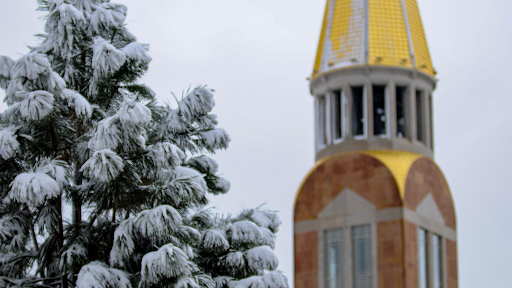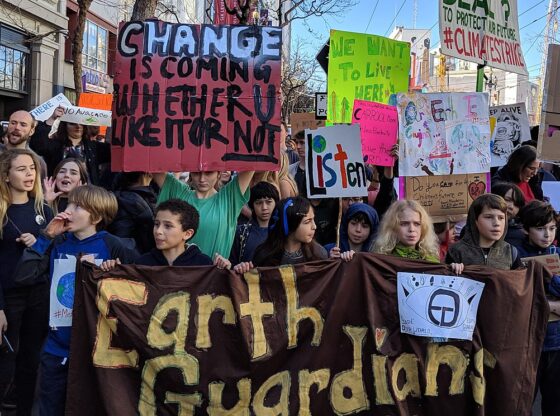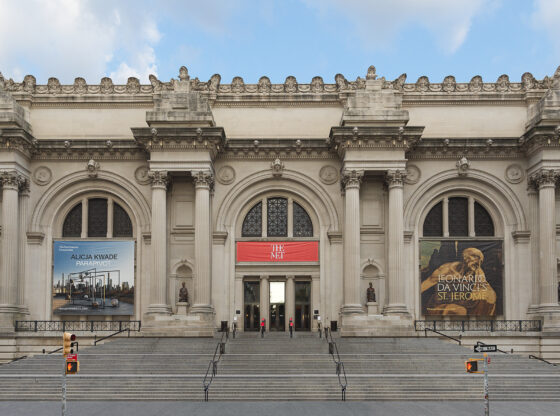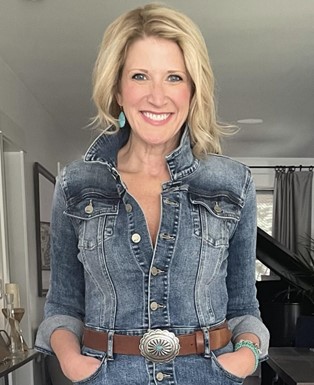This story is part one of a three-part series. Some names have been changed to protect identities.
In February, a single altered bathroom sign sparked a campuswide debate. After student members of the Social Justice Living and Learning Community announced their plan to open a gender neutral bathroom in first year residence hall Johnson-McFarlane, disparate voices engaged with the idea, both in support and opposition, marking another step for the rising attention to DU’s transgender community.
A group long kept systematically silent, the transgender community nationwide is growing its voice, with DU standing as a microcosm of the dominoes of awareness falling towards increased attention to the ‘T’ of LGBTQIA.
Though this is the most recent event to spark conversation, DU’s transgender community and allied students and staff have been building the conversation for months.
In October, a group of transgender students, faculty members, staff members and allies launched a campus-wide look at campus departments to assess institutional barriers and access for people who identify as transgender.
The group, led by Center for Multicultural Excellence Director of Educational Programs and LGBTIQA Services Thomas Walker.
The TransAllies group has identified 18 separate departments that they would like to see make a policy or procedural adjustment to better support transgender individuals. Some of these changes include adjustments to student records procedure, sport and recreations teams, student health care, financial aid, campus bathrooms and housing.
Their effort comes in the same year the university has seen a marked rise in the number of students openly identifying as transgender, especially upon enrollment.
“I understand that at least six students incoming this fall identified as transgender or gender queer to their orientation leaders, to their RAs, to faculty,” said Walker. “That’s pretty big, that within a week or two of getting to campus they had ‘outed’ themselves to somebody, and in most cases they were saying ‘I don’t know what to do about this.’”
The experiences of students such as Mike, a female-to-male transgender student, highlight why the issue is receiving new attention at DU.
Mike transitioned during his first year at DU, when he still lived on an all-girls floor in his residence hall. As he transitioned, he found himself struggling on campus, partly due to campus housing policies, and temporarily withdrew in the spring of 2011.
“I didn’t have a roommate at that time anymore, so I did feel very isolated. It was a hard time for me personally, I went through a period of depression and I had a really hard time keeping up in school,” said Mike.
In an effort to support students experiencing similar struggles, Walker started a group last winter called “Transnetwork,” a support group for people on campus identifying outside the labeled “gender binary.” The number of respondents he got surprised him.
“Going into that, I knew five people who were ‘out’ to me. From winter quarter to the end of spring quarter we went from the five people I knew to more than a dozen who were connected,” he said. “A dozen in an institution of 15,000 doesn’t sound like a lot, but that’s a huge increase, and that’s just the people we had found.”
“It’s not that the university has never paid attention to these groups before,” said Walker. However, after several diversity and inclusivity policy adjustments in the early 2000s, the issue has been left largely untouched. Now, questions are being raised.
Where DU Stands
At most universities, examining policies for gender transitioning students is a nascent practice. The students and staff have always been at colleges, but there has not always been acknowledgement.
It’s an oversight students such as Mike have often felt.
“A lot of people at DU don’t even realize that there is a trans community,” said Mike. The TransAllies group is hoping to bring the community further into the spotlight, the first step in making long-term changes across the board in administrational policies and practice.
“We’ve never had the opportunity or the critical mass of people on campus to battle through the clutter of everything on campus to say ‘we really need to take a good overall look at this,’” said Walker. “But over the last two years, the numbers have gone up … so it’s kind of calling the question.”
The question is also rising outside of DU and Colorado. Hundreds of colleges are now citing their “campus climate” score on the “Campus Pride Index,” a resource and support website for LGBT college students. The index ranks colleges on their support for LGBT populations on a scale of five stars.
DU scores three and a half stars overall, which Walker calls “ahead of the curve,” in the gender identity and expression score, which evaluates campus accommodations and considerations for students who identify as LGBT. DU receives a 3.5 out of five stars.
According to Walker, DU started out ahead of the trend by adding “sexual orientation” as part of the university non-discrimination policy in 1995, adding both “gender identity” and “gender expression” in 2007.
“The 2007 decision sort of put us ahead of federal law and brought us into keeping up with the city and state … but naming both identity and expression put us in about the top eight percent of colleges and universities,” said Walker. “That was fantastic, we were pioneers in kind of the truest sense of that stuff … but enthusiasm faded out.”
The Campus Pride Index also evaluates structural accommodations at universities, taking into account the availability of all-gender bathrooms, policies in student housing, campus identification systems and emotional support availability for transgender students. This is where advocates say DU is beginning to fall behind, and where the TransAllies group has focused its efforts.
In her work running a support psychotherapy group for male-to-female transgender individuals, DU doctorate student Emily Kerr hears, on a weekly basis, the stories of those who feel “left behind.”
“I find in my work that, more often than not, trans-identified clients have kind of learned to fly under the radar and are not as outspoken and assertive because they don’t want to draw attention to themselves,” said Kerr.
In her fourth year as a clinical psychology student at the Graduate School of Psychology, Kerr runs a weekly male-to-female support psychotherapy group. She said the lack of awareness around transgender issues is a battle being fought nationwide, not just at DU.
“The ‘T’ part of the ‘LGBT’ is lumped in; lesbian, gay and bisexual have to do with someone’s sexuality, which is not what gender is,” said Kerr. “I think the lesbian, gay, bisexual population has kind of stepped into the spotlight in terms of getting a lot of recognition and rights. Not to say there’s not a long way to go, but the transgender population has always kind of been behind that.”
Some students find support from resources off campus as well, such as the Gender Identity Center, a Denver-based organization that works with trans-identified people.
Executive Director of the center Karen Scarpella graduated from DU in 2010 with a Ph.D./LCSW in social work, and has since returned to DU to teach classes in the Graduate School of Social Work. She is concerned about the support offered for transgender students by DU.
“I think they pay a lot of lip service to diversity and trans, but there is still a lot of lagging,” said Scarpella about DU. “However, their good intentions do put them in front of a lot of other places. They know they need to work on it, but it’s not a priority for them.”











